By Sarah Lindemann-Komarova, Medium, 2/22/24
Two years into an SMO that no one expected or wanted, it has become a fact of life with two fronts, the battlefield and economic. The focus here is on economics and life after two years of Western sanctions. The headline is “moving on”.
According to the Levada Center, 75% of respondents look forward to 2024 with “hope”, 8% with uncertainty”, and 13% with “anxiety”. Inflation is real and felt but people are coping in part because of a labor shortage that has forced salary increases in the private sector. Public sector service jobs continue to lag behind, one of the reasons there are 12 vacancies at the Manzherok Village school and no full-time medical staff in the clinic. There are plans to build “social housing” for these professionals but a local entrepreneur does not think this will make a difference, “No one is going to work for that kind of money now”.
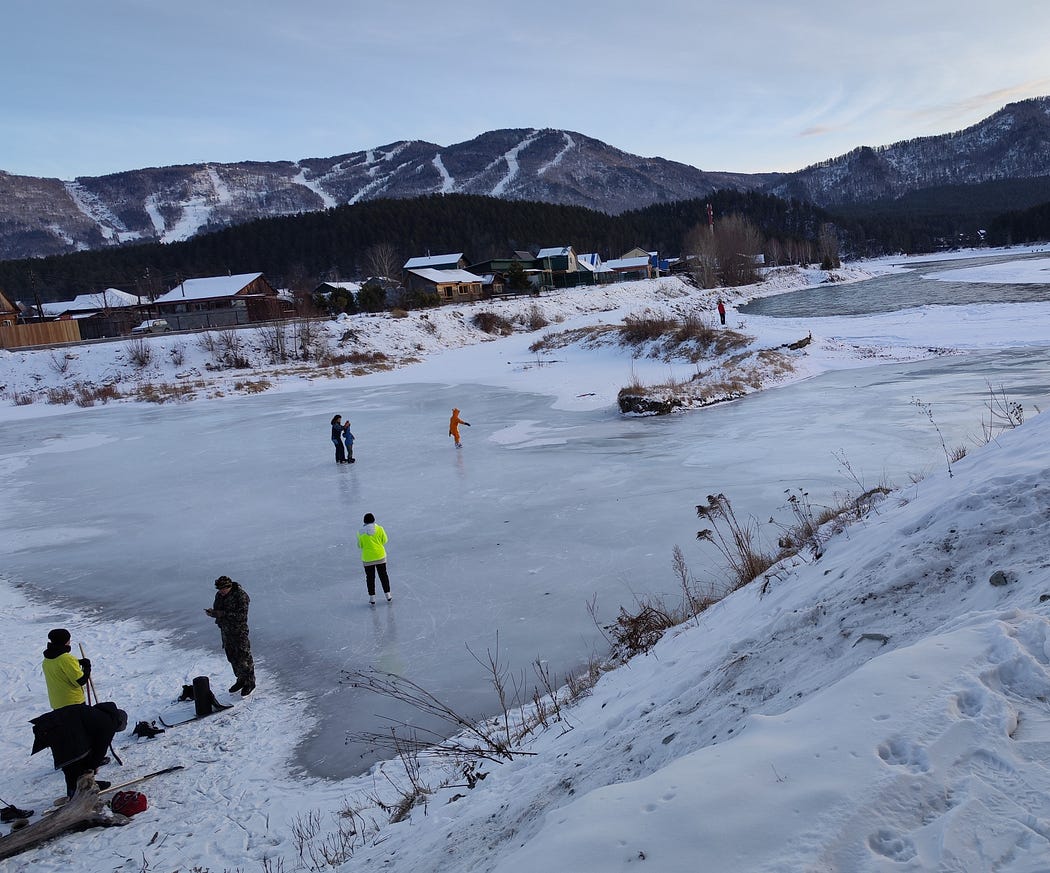
Sanctions are rarely mentioned. If they are, it is to reflect on how scary it was when they were announced followed by admiration at the soft landing Central Bank Head Elvira Nabiullina has pulled off. There is no arrogance in this assessment, just pride and a little bit of wonder. One businessman expressed a different kind of wonder, why the Europeans are signaling to investors and depositors around the world that Europe is not a safe place. He moved his money after receiving threatening messages from a Swiss Bank. It is now in Kazakhstan, Dubai, Cyprus and he is also investing in Russia.
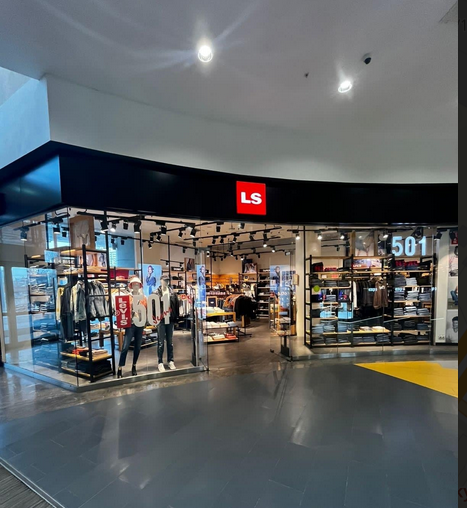
During holiday shopping at a mall in Novosibirsk, a 22 year old translates: Pull & Bear = Dub, Maag = Zara, LS = Levi’s, etc. The massive IKEA remains empty but the French Leroy Merlin and Auchan continue on as always although Leroy Merlin appears to be assuming more and more IKEA product lines. The high prices were mitigated by surprisingly great pre-holiday sales up to 70% in most stores.
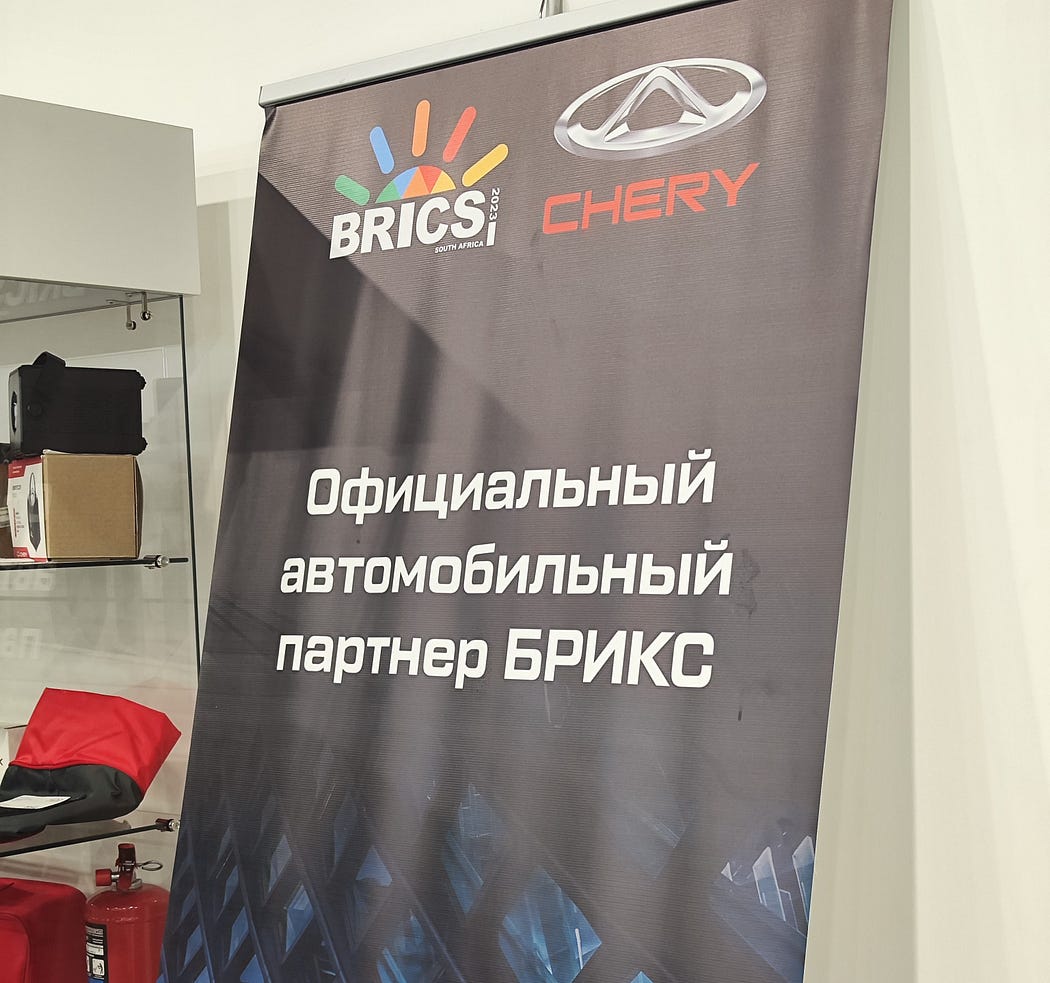
The Chinese are rapidly cornering the car market as the French, Germans, and Americans, who had factories in Russia, left with options to buy back. Chery was making deals and the dealership was full. The $30,000 + Tiggo ProMax 7 could be had for $11,000 with a Renault Duster trade-in. Haval was not making deals. During the test drive, salesman Emile from Azerbaijian explained the differences between the Haval Dargo (Big Dog in Chinese) made in Tula, 193 km from Moscow, and the Dargo X made in China. The opening of the Tula Great Wall Motor Company factory in June 2019 was a big moment celebrated in person by Xi Jinping and Putin.
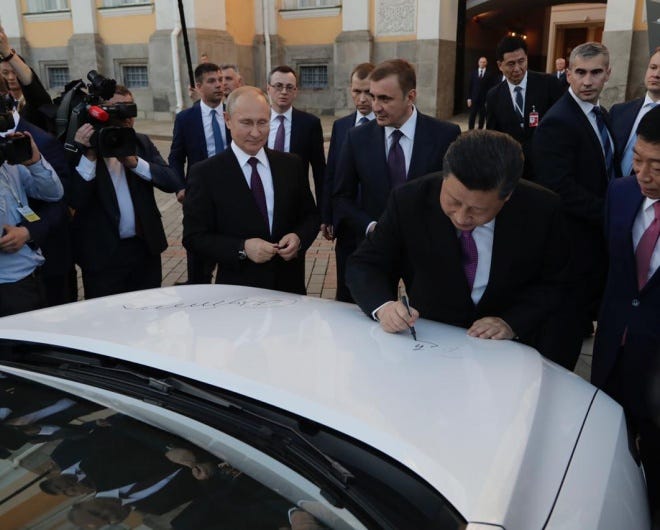
Emile, also talked about getting his degree in Novosibirsk and spending two summers in Ocean City Baltimore on the Work and Travel Program. He liked America and considered staying, but decided it wasn’t for him. His family is here and “you can make money in the US but you have to work all the time. Here, you can take a few months off and do other things you want to do.”
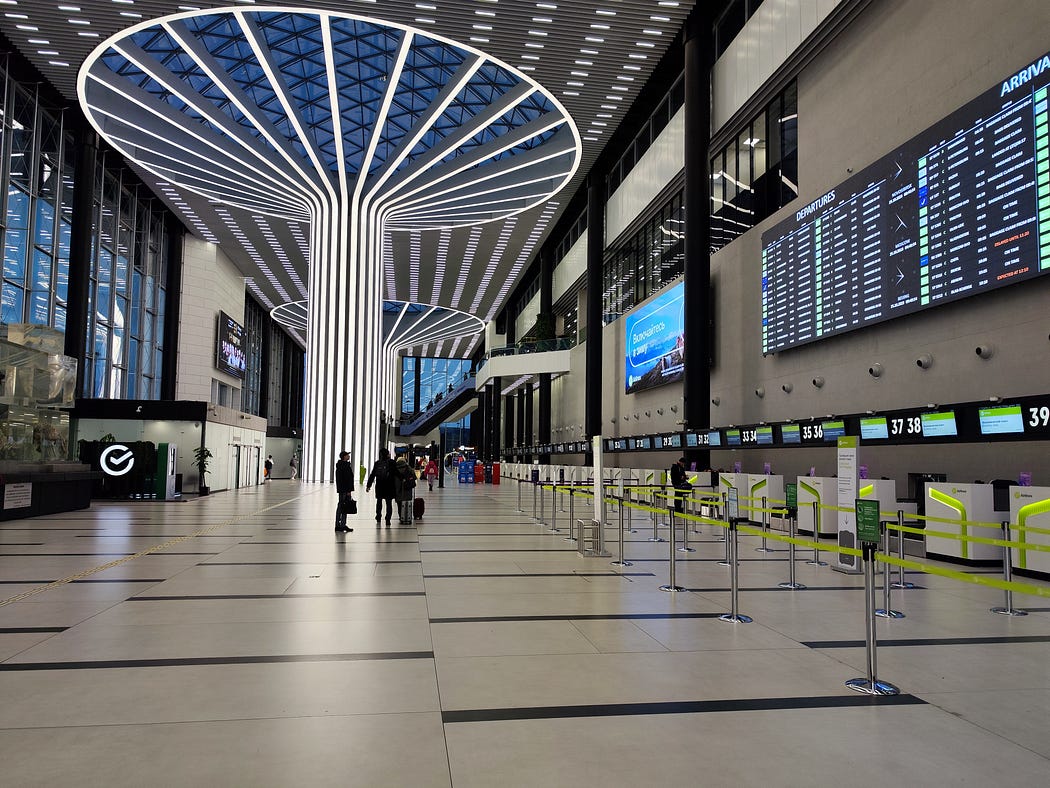
Two weeks before the SMO began, the new, improved Tolmachevo International Airport opened. At that time there were regular flights to Prague, Seoul, and various German cities. The expectation was that this major expansion would support growth in the role of Novosibirsk as the human and cargo hub between east and west. Instead, the billowing columns in the massive new entrance hall are now only serving international travelers to and from Central Asia, Yerevan, Baku, China, and the transit gateways to the West, Dubai and Istanbul. They are also welcoming vacationers exploring newly popular domestic tourism destinations like Kamchatka, Vladikavkaz, Kaliningrad, Gorno Altaisk, and Vladivostok.
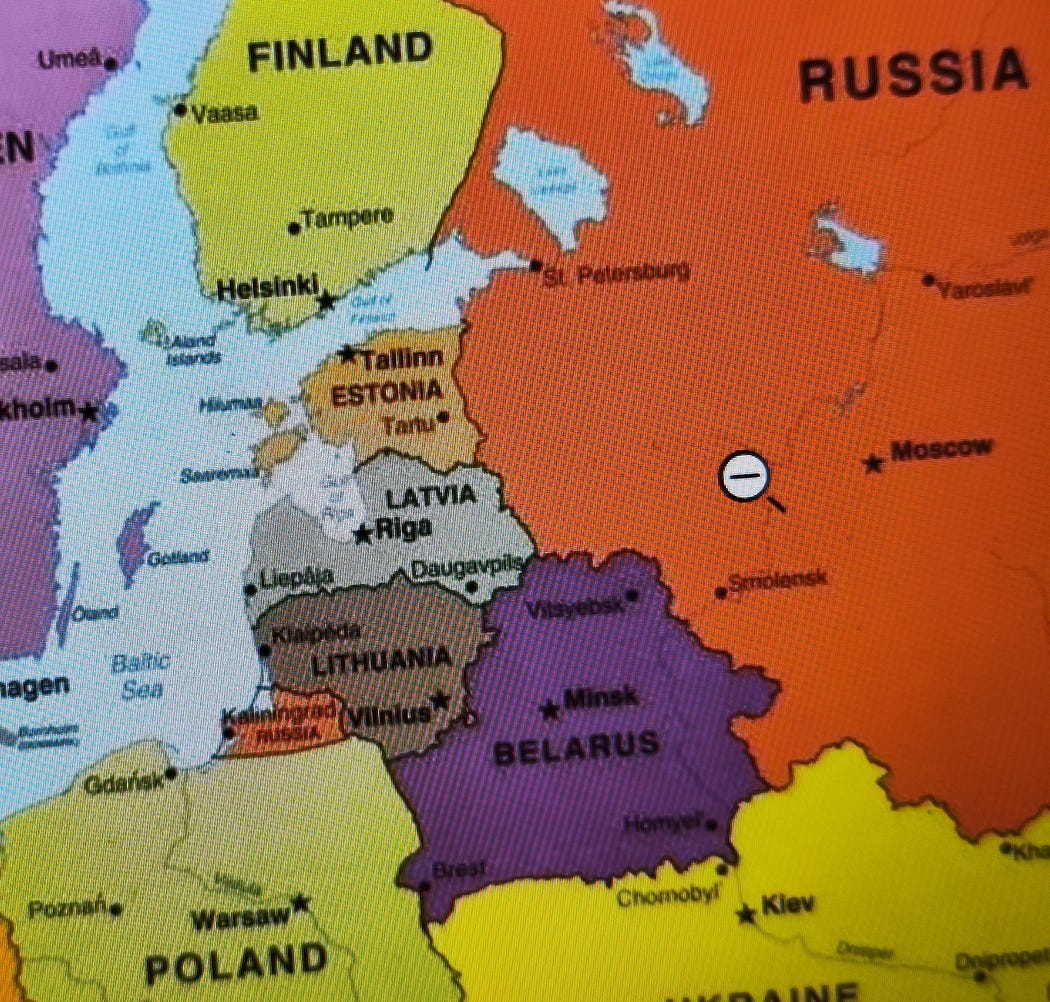
The weekly flight to one of those destinations, Kaliningrad, now requires a detour over Baltic Sea international waters. The Region is surrounded by Europe (Lithuania and Poland) and the air space was closed in response to the SMO. In June of 22, Lithuania announced a ban on sanctioned goods traveling to Kaliningrad. Russia objected and a month later, the EU issued some new guidelines that allowed the goods to move.
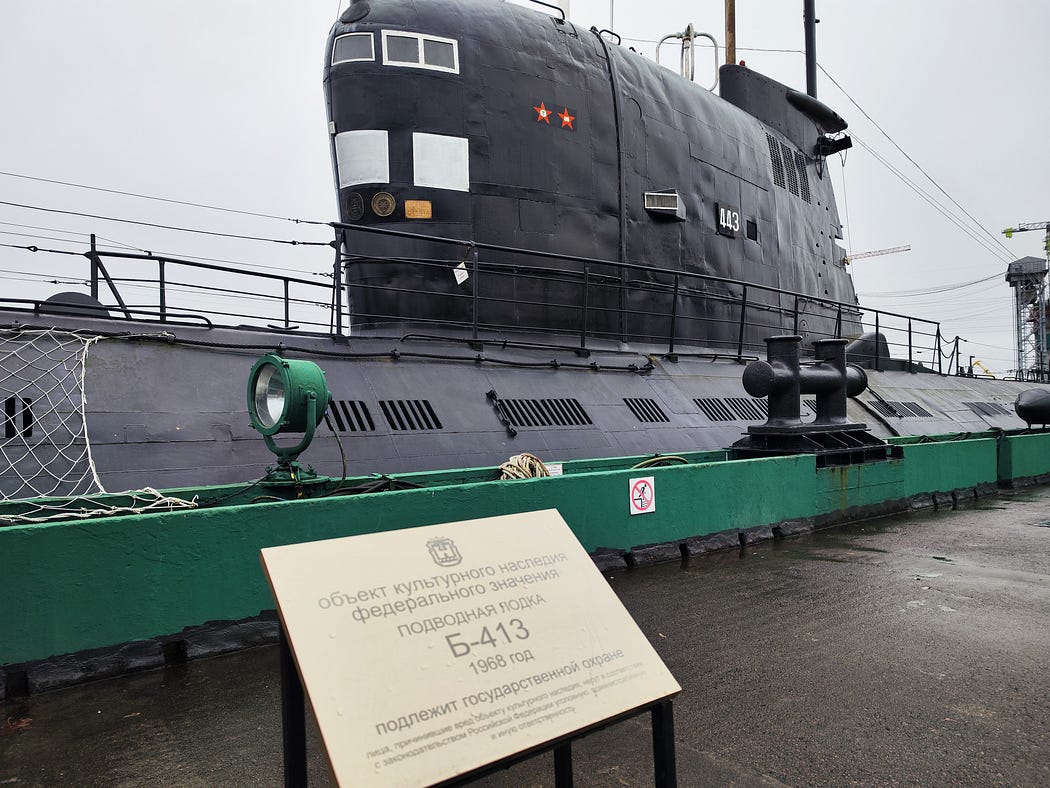
Despite the precarious location and intensification of the conflict, there was no trace of that turbulence or other possible threats in October 2023. In Kaliningrad, people were moving in and moving on. The cab’s children’s car seat and toys were not evidence of a caring grandfather, but a career change. The 50+ driver’s previous lucrative business was transporting goods from Lithuania. He sold his trucks, bought a baby seat, and moved on.
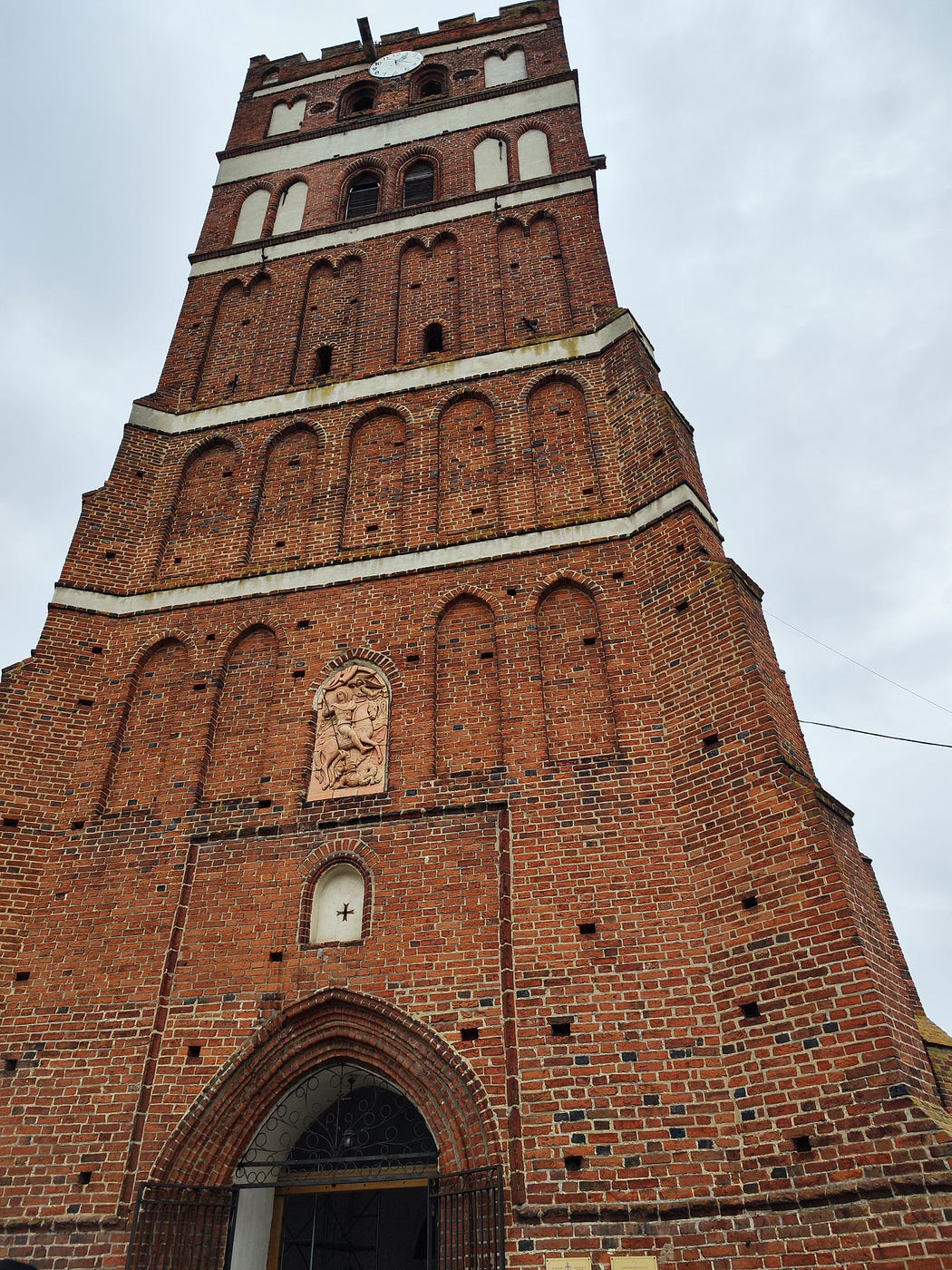
After life as Prussia and Poland, Kaliningrad was the German City of Konigsberg until 1945 when it was given to the Soviet Union in the Potsdam Agreement. Over the next couple of years German residents were expelled and people from other parts of the USSR moved in. That flow has continued generating a steady population increase since 1950. It has long been the destination for Siberians who want to stay in Russia but live in Europe or escape the cold climate. A young cab driver from Novokuznetsk moved three years ago because of the cold and bad environment in his native coal mining region. Initially he wanted to move to Petersburg, but he couldn’t afford an apartment and didn’t want to get a mortgage. He ended up mortgage free and happy in Kaliningrad.
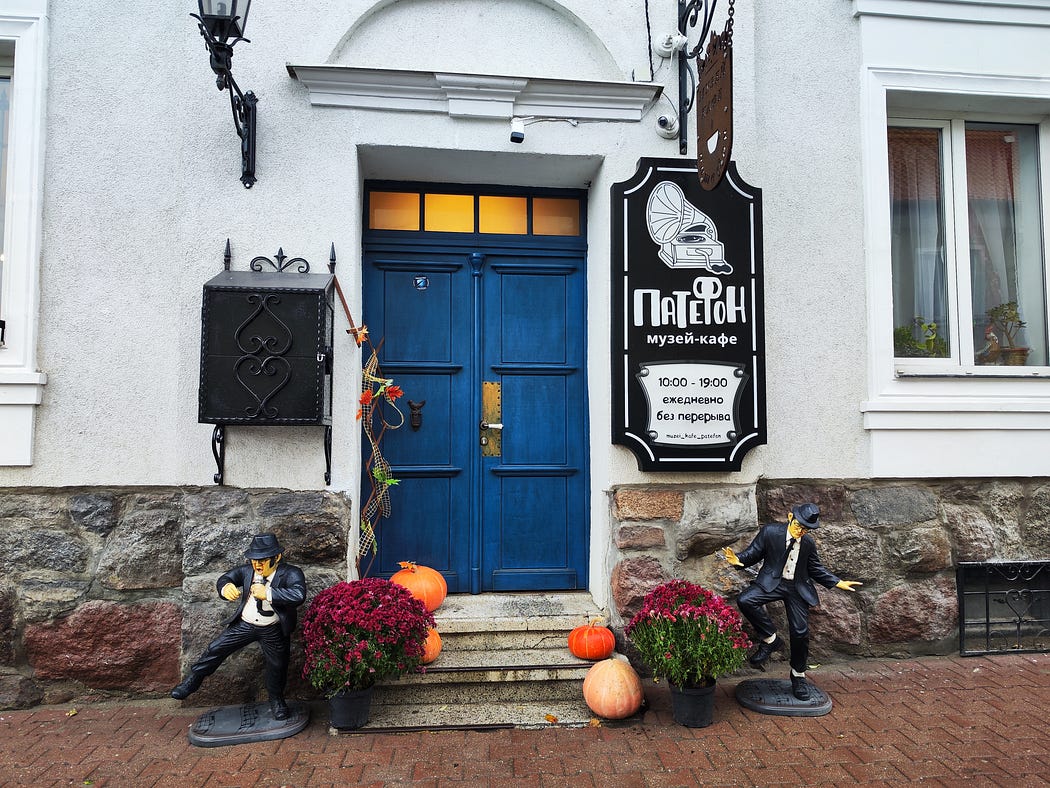
Kaliningrad was a world class destination for tourists before options were limited. 13th century on, pick an era and you will find the most eclectic mix of sites including where Napoleon slept, a Cold War era submarine, Kant’s grave, and Blues Brothers statues outside a café/museum with record players from 1840–1940. There is also the resort town Zelenogradsk. Founded in 1252, in 2010 it branded itself a “cat town” and now features cat murals, cat traffic lights, cat food machines, even the war memorial had a white cat lounging by the flame.
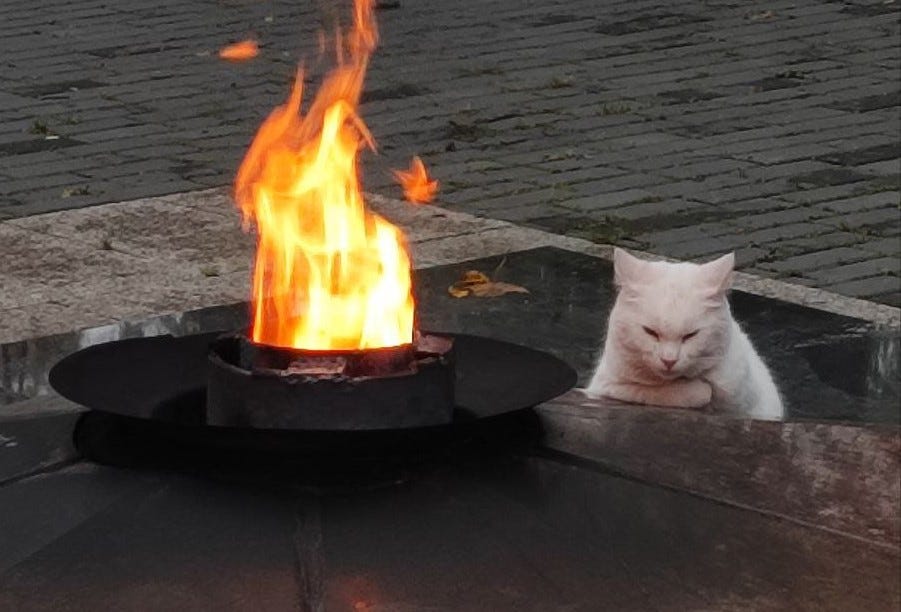
On the way to the Kaliningrad flea market, selling everything from fish shot glasses to German helmets with bullet holes, the cab driver boasted that his Grandmother was one of the first people to move here in 1946. He goes on to say that everything is great. Yes, housing is twice as expensive but there is plenty of work if you are ready to work. He had no negatives about the current development boom. He is proud and excited for his 4th generation daughter’s future with huge investments going into culture, including affiliates of the Tretakov Gallery and Bolshoi Theatre, and education with apartments for teachers.
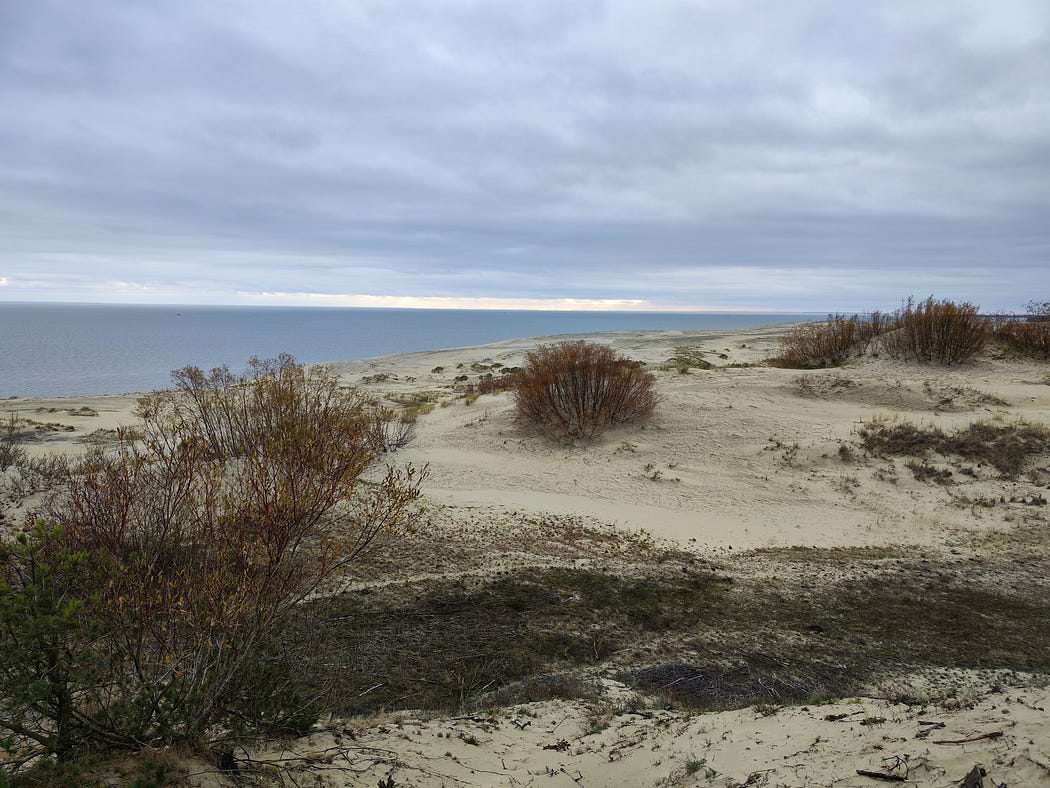
Others are less enthusiastic complaining about change, getting used to change, and the taming of what once were wild places. The gripes about the prices and congestion that come along with being a booming tourist destination. One cabbie/fisherman cited 4 hour summer traffic jams to get on the Curonian Spit, a 98 km. forested sand dune separating the Baltic Sea from the Curonian Lagoon. Half of the Spit is a National Park in Russia and the other half is in Lithuania.
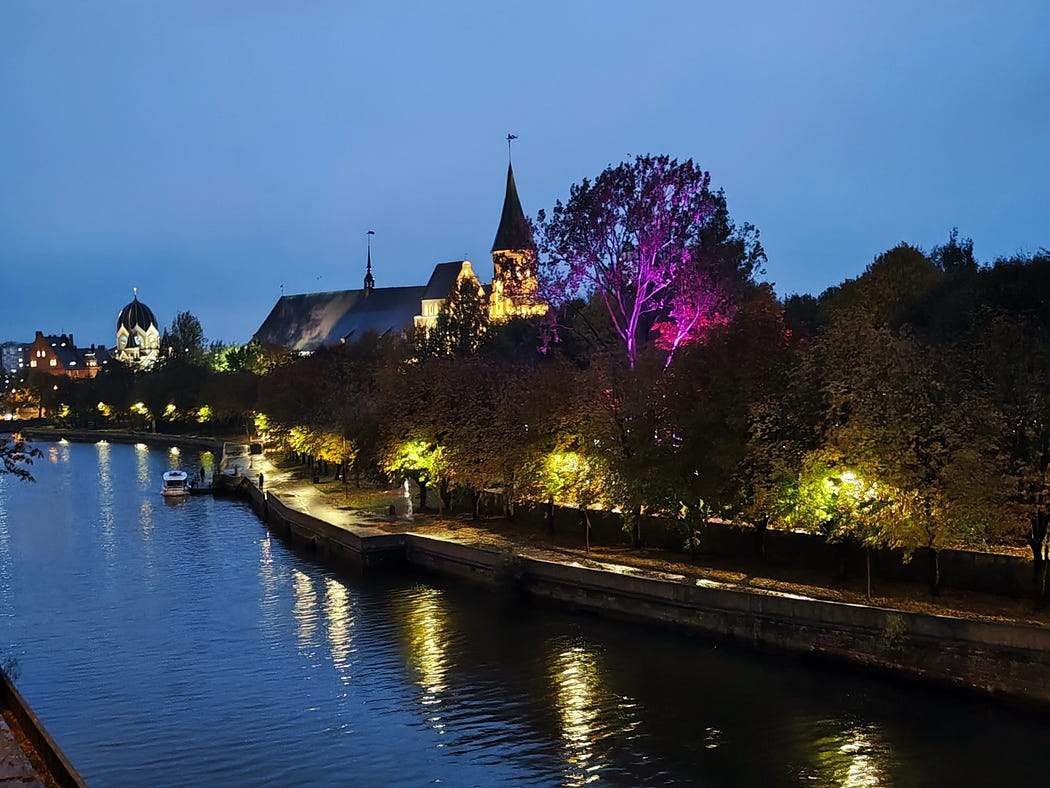
Even the more ancient relics are coated with references to the Great Patriotic War (WWII). The 14th Century Konigsberg Cathedral was jam packed on a Tuesday night, hundreds of people paid 500 rubles to hear an organ concert. The building was partially destroyed, along with most of the City, by Allied bombing in August 1944. Passing remnants of forts and churches outside the City, the guide explained that none of the old buildings were damaged by bombs. Their semi-demolished state was the result of local inhabitants taking the bricks to build homes after the war. Most haunting are the remains of the Allenberg Psychiatric Hospital. It was the best in Germany before an SS Division affiliated with the Dachau Concentration Camp moved in and used it for experiments.
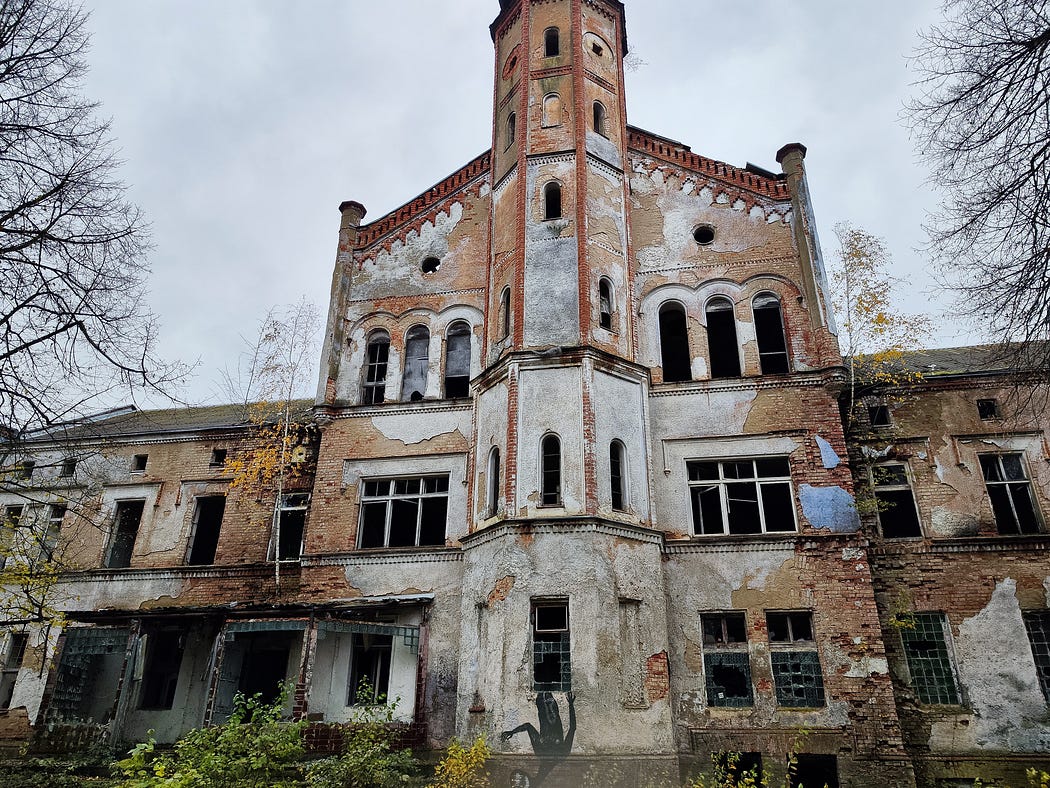
The path to moving on in Russia is often viscerally informed by national history. Two women reminded me of this when we discussed sanctions. One, born around the time Brezhnev and Nixon signed the first Strategic Arms Limitation Treaty, is a corporate executive. The other was born during Perestroika and recently moved her yoga business from Novosibirsk to Altai. They both grew up sharing bedrooms with brothers, sleeping on foldout couches with a table to do homework.
“40 jars of cucumbers, that was our record”, the younger woman boasted about summers spent helping her Grandmother in a Kazakhstan village.
The other responded describing her great-grandmother, “She never ever threw anything out. If someone left a little piece of bread, she would take it, dry it into a crouton, store it in a bag hanging from the kitchen door, and when others had bread, she would eat from the bag.”
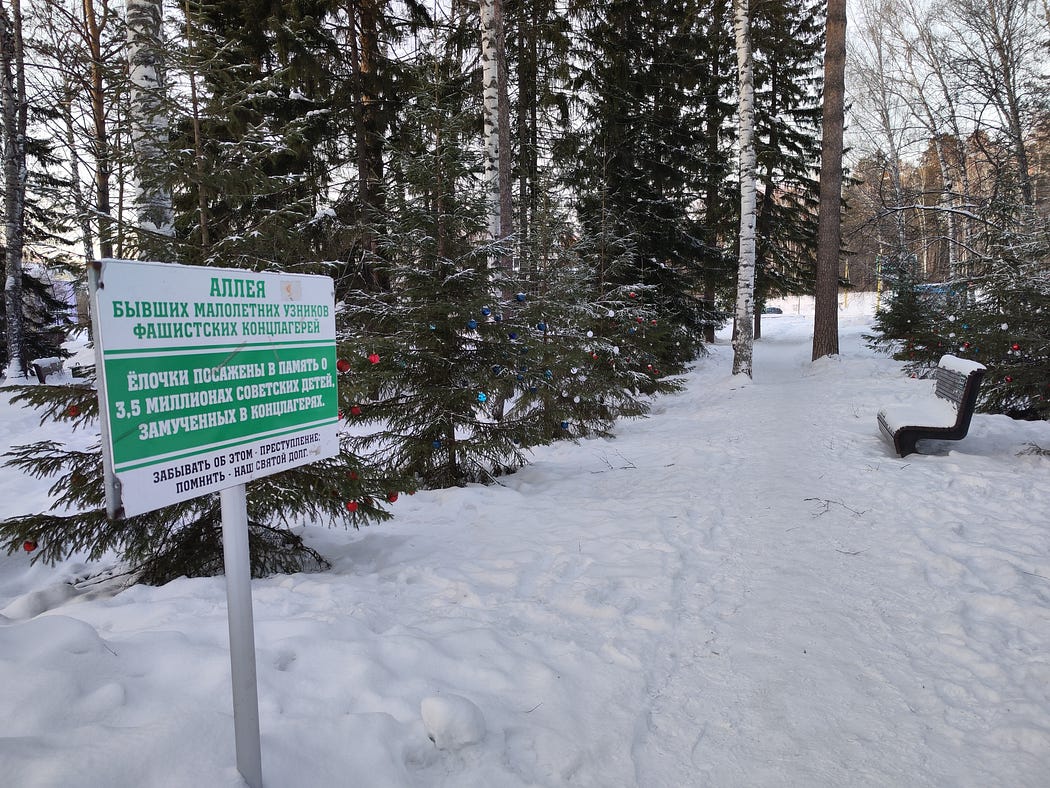
Moving on is also bounded by the status quo and no one expects the sanctions will end even when the shooting stops. People here are more comfortable with the idea that nothing is perfect, there is always a work around so “Plan B” is built into the hardware, you adapt and keep going. Even today, for many like the corporate executive, the legacy of the impact from past western invasions came first hand, “There were two wars, one after the other, and there were no men so she had to be tough”.
Part Three: The Social Contract and the Next Gen
Three cheers, Natylie and guest writer. We need more of this!
From the years I spent behind the Iron Curtain, I can say it feels very real.